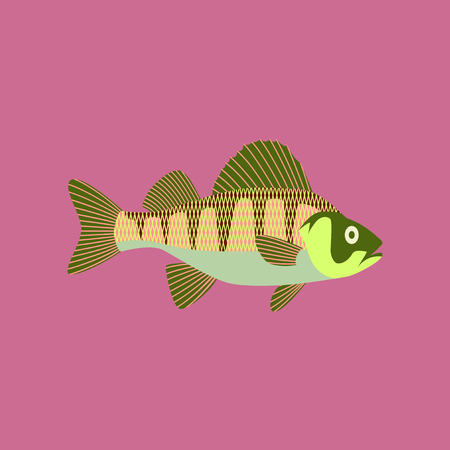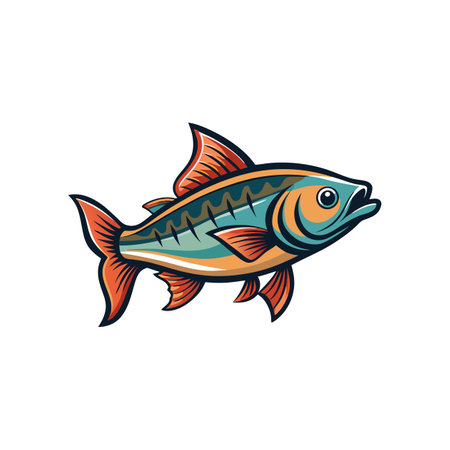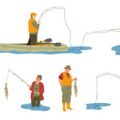1. Understanding the Basics of Bait
If you’re gearing up for your very first fishing trip in the U.S., one of the most important things to know is how to pick the right bait. Whether you’re heading out to a local pond, a big lake, or even the ocean, understanding what bait is and how it works can make all the difference between going home empty-handed or catching your first fish.
What Is Bait?
Bait is anything used to attract fish so they’ll bite your hook. It’s the “food” you offer to tempt them, and it comes in two main types: live bait and artificial lures. Picking the right kind isn’t just about what looks good—it’s about matching what the fish want to eat.
Live Bait vs. Artificial Lures
| Type | What It Is | Common Examples | When to Use |
|---|---|---|---|
| Live Bait | Real, living creatures that fish naturally eat | Worms, minnows, crickets, shrimp | Great for beginners and when targeting common freshwater or saltwater species |
| Artificial Lures | Man-made objects designed to look like prey | Plastic worms, spinners, crankbaits, jigs | Good for covering more water, reusing, and when targeting specific fish behaviors |
Why Choosing the Right Bait Matters
The type of bait you use can make or break your fishing trip. Different fish have different diets, and their preferences can change with seasons, weather, and location. Using the right bait not only increases your chances of getting bites but also helps you learn more about local fishing traditions. In many parts of the U.S., anglers swap stories about which baits work best for bass in spring or trout in mountain streams—so picking wisely is part of joining that community.
2. Popular Types of Bait in the U.S.
Choosing the right bait can make or break your first fishing trip. In the United States, anglers use a variety of baits to attract different fish species depending on the region and the type of water they are fishing in. Here’s a simple overview of some of the most popular bait options you’ll find across America.
Live Bait Choices
Live bait is a favorite among many anglers because it closely mimics what fish eat in their natural habitat. Here are some common live baits used in the U.S.:
| Bait Type | Best For | Popular Regions |
|---|---|---|
| Worms (Nightcrawlers, Red Wigglers) | Bluegill, Bass, Trout, Catfish | Nationwide |
| Minnows | Crappie, Bass, Walleye, Pike | Midwest, South, Great Lakes |
| Leeches | Walleye, Northern Pike, Perch | Northern States, Midwest |
| Crawfish | Bass, Catfish, Panfish | Southeast, Southern States |
| Cut Bait (Pieces of Fish or Shrimp) | Catfish, Striped Bass, Saltwater Species | Southern States, Coastal Areas |
Artificial Bait Options
If you prefer not to use live bait or want something reusable, artificial lures are a great option. They come in many shapes and colors to imitate real prey.
Common Artificial Lures:
- Soft Plastics: Worms and grubs for bass and panfish.
- Spinners and Spoons: Flashy lures that work well for trout and pike.
- Crankbaits: Hard-bodied lures for bass and walleye.
- Topwater Lures: Great for catching bass during early morning or late evening.
- Jigs: Versatile for almost any species; just change the size and color based on your target fish.
Bait Tips by Region & Fish Species
| Region | Popular Fish Species | Bait Recommendations |
|---|---|---|
| Northeast Lakes & Rivers | Bass, Trout, Perch | Worms, Minnows, Spinners |
| Southeast Ponds & Rivers | Bass, Catfish, Bluegill | Crawfish, Cut Bait, Soft Plastics |
| Midwest Lakes & Streams | Panfish, Walleye, Pike | Minnows, Leeches, Jigs |
| West Coast Fresh & Saltwater | Bass, Salmon, Halibut | Cut Bait (Fish/Shrimp), Crankbaits |
A Few Quick Tips for Beginners:
- If you’re unsure what to use, start with worms—almost every freshwater fish will bite!
- Minnows are excellent if you’re targeting bigger predators like bass or walleye.
- Select your bait based on local advice from tackle shops or park rangers—they know what works best in your area!
With these basics covered, you’ll be ready to pick the perfect bait for your first American fishing adventure!

3. Matching Bait to Target Fish
Choosing the right bait is all about knowing what kind of fish you’re after and where you’re fishing. Different species have different tastes, and the type of water—lake, river, or coastal—also plays a big role in your bait selection. Let’s break it down to help you pick the best bait for your first fishing trip.
Understanding Your Target Fish
Start by figuring out which fish live in your chosen spot. For example, largemouth bass love lakes and ponds, while catfish are often found in rivers. If you’re heading to the coast, you might be after species like redfish or flounder. Once you know your target, you can match your bait to their preferences.
Bait Choices for Common American Fish
| Fish Species | Preferred Bait | Best Water Type |
|---|---|---|
| Largemouth Bass | Plastic worms, minnows, crankbaits | Lakes, ponds |
| Trout | Nightcrawlers, salmon eggs, small spinners | Lakes, rivers |
| Catfish | Chicken liver, stink baits, cut bait | Rivers, lakes |
| Panfish (Bluegill, Crappie) | Worms, crickets, small jigs | Lakes, ponds |
| Redfish (Red Drum) | Shrimp, cut mullet, soft plastics | Coastal waters |
| Flounder | Minnows, shrimp, jig heads with soft plastics | Coastal waters |
Selecting Bait Based on Water Type
Lakes & Ponds
Lakes and ponds usually have calmer water and a variety of fish. Live bait like worms or minnows works great because these fish are used to natural food sources. Artificial lures such as plastic worms or crankbaits also perform well for bass and panfish.
Rivers & Streams
The moving water in rivers means fish tend to go for smelly or flashy baits that grab their attention quickly. Catfish love stink baits or chicken liver here, while trout will often bite on nightcrawlers or salmon eggs drifting with the current.
Coastal Waters (Saltwater)
If you’re fishing near the ocean or in brackish water along the coast, natural baits like shrimp or cut mullet are favorites among redfish and flounder. Soft plastics that mimic local prey also work well when casting from shorelines or piers.
Quick Tips for Picking Your Bait:
- Know your fish: Research what lives where you’ll be fishing.
- Match local food: Choose bait that looks or smells like what the fish eat naturally.
- Watch the weather: On cloudy days or in murky water, use brighter colored lures to get noticed.
- Ask locals: Don’t be shy! Local anglers or tackle shops can tell you what’s working right now.
Selecting the right bait doesn’t have to be complicated—just think about your target fish and the body of water you’re fishing in. With a little planning and the right approach, youll be ready to make your first cast count!
4. Local Regulations and Ethical Considerations
Before you pack your tackle box, it’s important to know the local rules about bait use in the area you plan to fish. In the United States, fishing regulations can vary widely from state to state, and even from one lake or river to another. Following these rules isn’t just about avoiding a fine—it helps protect native species and keeps our waters healthy for everyone.
Know the Rules: What’s Allowed and What’s Not
Some places allow live bait like minnows or worms, while others might restrict certain types to prevent the spread of invasive species. It’s always smart to check the official website for your state’s Department of Fish and Wildlife or ask a local bait shop for advice.
| Type of Bait | Common Restrictions | Where to Check Rules |
|---|---|---|
| Live Minnows | Banned in some lakes to stop invasive fish | State Fish & Wildlife Dept. |
| Naturally Collected Worms | Usually allowed, but check local guidelines | Bait shops, online resources |
| Artificial Lures | Rarely restricted, but sometimes required for catch-and-release areas | Posted signs at fishing spots |
| Corn or Dough Baits | Sometimes not allowed in trout streams | State regulations booklet |
Protecting Native Species and Ecosystems
The right bait choice isn’t just about what gets bites—it’s also about keeping local fish populations healthy. Using non-native bait (like certain minnows) can introduce diseases or unwanted species. Always dispose of unused bait properly—never dump it into the water or leave it on shore.
Quick Tips for Responsible Angling:
- Buy bait locally: This reduces the risk of spreading non-native species.
- Follow “pack-in, pack-out” practices: Take all your trash and leftover bait with you.
- If unsure, ask: Local anglers and bait shop owners are usually happy to help newcomers do things the right way.
Following American Angler Norms
In American fishing culture, respecting nature and other anglers is a big deal. Give others space on the water, follow posted signs, and be friendly—most folks out there will appreciate it if you’re trying to learn and do things right.
5. Pro Tips for First-Time Anglers
Bait Handling Made Simple
Keeping your bait fresh and lively is key to attracting fish. Here are a few easy tips:
- Keep it cool: Store live bait like worms or minnows in a cooler or insulated bait box, away from direct sunlight.
- Stay clean: Always wash your hands before handling bait to avoid transferring scents that might scare fish away.
- Use the right tools: Small nets or bait scoops make it easier to handle delicate live bait without harming them.
Casting Tips for Beginners
Casting can feel tricky at first, but practice makes perfect. Follow these starter pointers:
- Start slow: Don’t try to cast too far right away; focus on accuracy instead of distance.
- Watch your surroundings: Make sure there are no trees or people behind you before you cast.
- Keep your line tight: A slightly taut line helps you feel when a fish bites and makes hook-setting easier.
Bait Storage: Keeping Things Fresh
| Bait Type | Best Storage Method |
|---|---|
| Live Worms | Damp newspaper in a ventilated container, stored cool |
| Minnows | Aerated bucket with clean water, out of direct sun |
| Artificial Lures | Tackle box compartments, dry and organized by type |
| Corn or Dough Baits | Airtight baggies or containers, refrigerated if possible |
Where to Buy Bait Locally
You can find bait in lots of places across the U.S. Here are some common options:
- Bait & tackle shops: These are often staffed by experienced anglers who can answer your questions about local fishing conditions.
- Outdoor stores: Chains like Bass Pro Shops or Walmart usually carry live and artificial baits.
- Gas stations near lakes: Many rural gas stations close to popular fishing spots stock basic live bait like worms and minnows.
- Local farmers markets: Sometimes offer fresh worms or specialty baits during fishing season.
Connect With the Fishing Community
The best way to learn about bait and fishing spots is by connecting with local anglers. Here’s how:
- Join a fishing club: Many towns have beginner-friendly clubs that host events and share advice.
- Check online forums: Sites like Fishbrain, Reddit’s r/Fishing, or Facebook groups are full of local tips and meetups.
- Ask at the dock or pier: Most anglers are happy to help newcomers—don’t be shy about asking questions!


